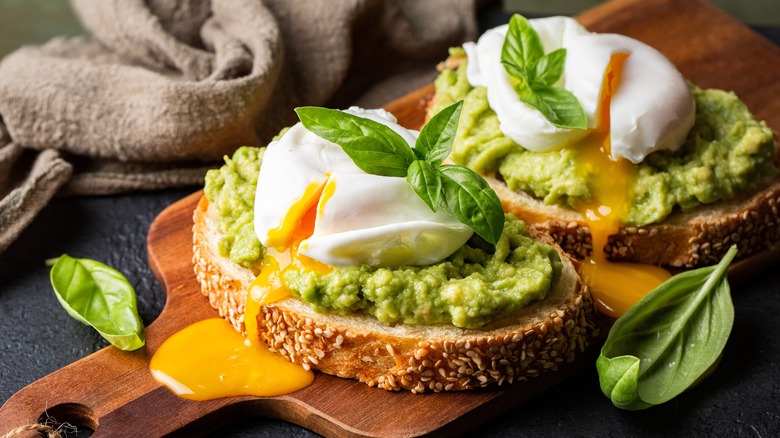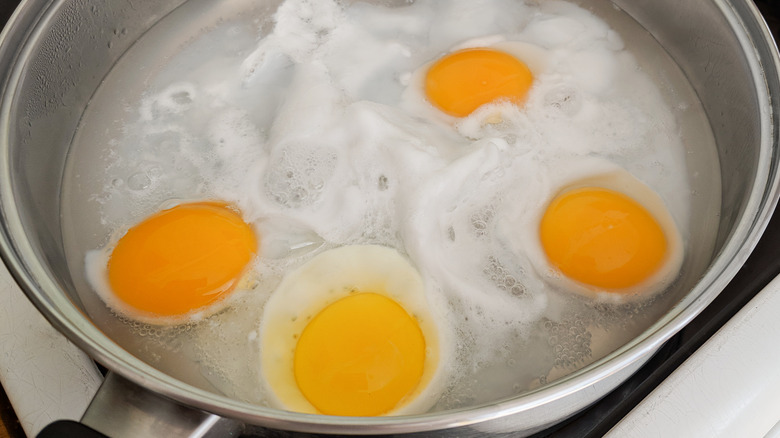Mistakes To Avoid When Poaching Eggs, According To An Expert
Poached eggs were once associated solely with eggs Benedict until we discovered how the yolk's luxurious and velvety texture transforms even the simplest dish into a silkier mouthfeel. Poached eggs add protein to salads, richness to avocado toast, and even elevate instant ramen, thickening broths and sauces for heartier meals. The only downside, and likely the reason poached eggs aren't found in every dish, is that they can be tricky to prepare.
Food Republic contacted Nelson Serrano-Bahri, the Director of Innovation at the American Egg Board, to learn from this incredible egg expert how to properly approach this task. Serrano-Bahri addressed several common mistakes cooks make when poaching eggs, and explained how to correct them, ensuring every egg has a firm white and a gooey, runny yolk.
Serrano-Bahri begins by assembling the proper tools. Although eggs are small, they require a "large, deep vessel" for poaching, allowing them to move freely and submerge completely. Choose a pot that can hold roughly three inches of water. You'll also need a slotted spoon, fine mesh strainer, or spider to retrieve the cooked eggs. Rather than immediately plating the poached egg, Serrano-Bahri suggests creating "a safe drip zone" with a clean kitchen towel or paper towels to allow the eggs to drain, and prevent them from making the dish watery. This technique is also a good use for leftover bread, especially the underappreciated heel that few people eat.
Tips for poaching eggs
Nelson Serrano-Bahri offers a few more tips for cooking poaching eggs. He warns against cooking them in boiling water, as this can cause them to break apart. Instead, he suggests bringing the water to a gentle simmer, "around 185-195 degrees Fahrenheit," and adding a splash of white vinegar "to start the curdling process and really tighten up your eggs." Remember to season the water with salt to add even more flavor.
Crack the eggs into a small bowl, and gently slide them into the simmering water. Let them cook for three to five minutes until the whites are set, then remove them with a slotted spoon to your "safe drip zone." Fresh eggs are ideal for poaching since the whites become watery as they age, and won't envelop the yolk properly during cooking. To ensure freshness, check the carton's "best before" date. A fresh egg, once cracked, should have cloudy whites. Use older ones for hard-boiled eggs instead.
If you're new to preparing dishes like eggs Benedict with poached eggs, synchronizing the cooking to have everything ready at once can be challenging. A helpful tip from Serrano-Bahri is to start toasting the bread as you drop the eggs into the water. This way, you can prevent the bread from drying out, or the eggs from cooling down.


